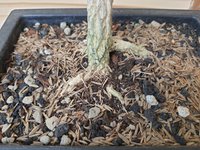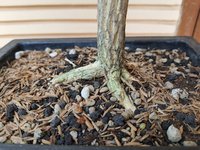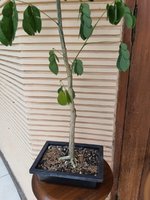Lumaca
Mame
Hello all. I am looking for advice on this Samanea saman I've been growing from seed.
The tree has spreading nebari, but unfortunately it is on a bit of a different height from ground level. The tree itself is a straight trunk with no branching yet since I was just trying to thicken the trunk.
Is my only option to lose one side of the trunk, or I was thinking about tilting the tree so the roots are on the same plane? Would love to hear your ideas.

Back 1

Back 2

Front 1

Front 2
The tree has spreading nebari, but unfortunately it is on a bit of a different height from ground level. The tree itself is a straight trunk with no branching yet since I was just trying to thicken the trunk.
Is my only option to lose one side of the trunk, or I was thinking about tilting the tree so the roots are on the same plane? Would love to hear your ideas.

Back 1

Back 2

Front 1

Front 2

